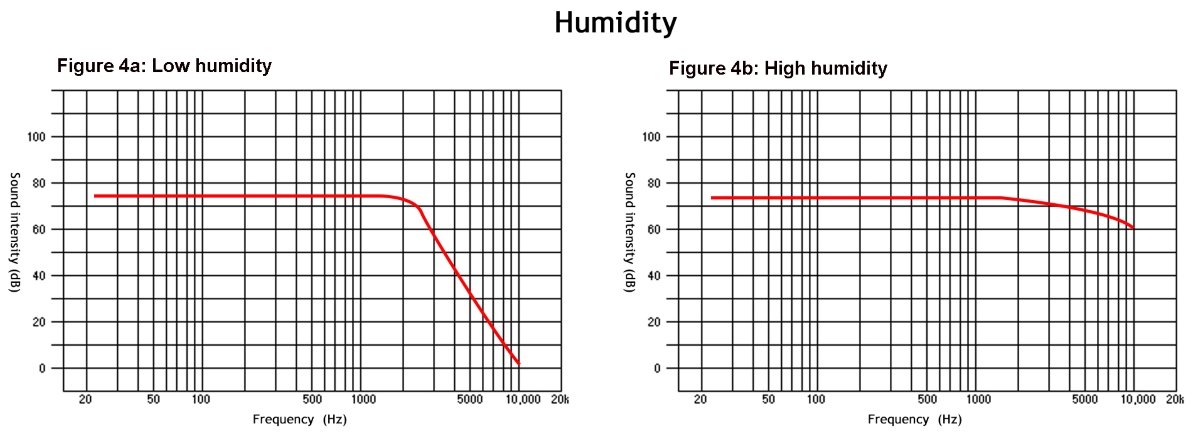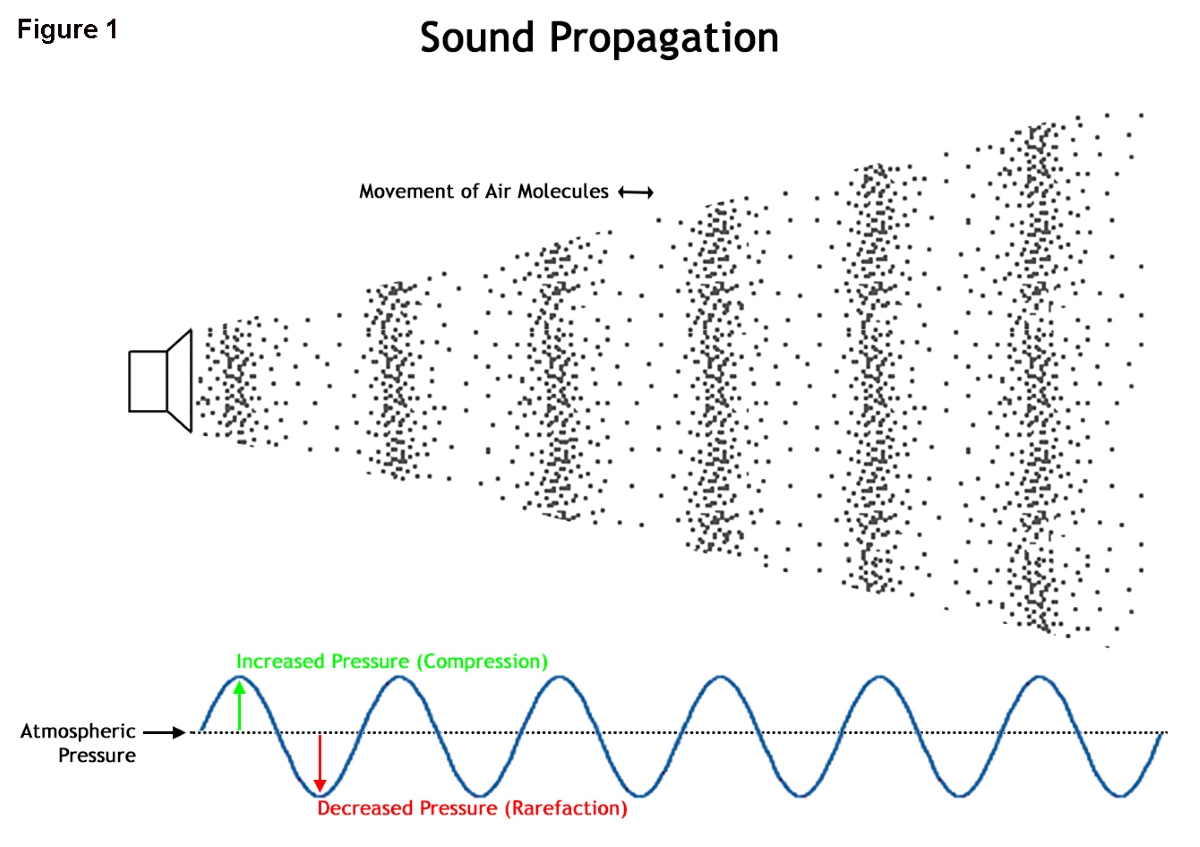The most obvious difference between indoor and outdoor sound is the lack of reflecting surfaces. In my previous article, Unique Signatures, we explored the acoustic behavior of sound in enclosed spaces, so now our attention turns to acoustic behavior in the free field, i.e., outdoors.
It means we don’t have to deal with reverberation, standing waves, room modes or any of the other issues that make mixing sound indoors so challenging.
However, there are various environmental factors which can have a impact on the sound propagation that simply don’t exist in the controlled indoor environment. To understand the impact of these environmental factors, first we need to take a look at how sound propagation works.
That which we perceive to be sound is actually acoustical energy traveling, as waves, through a physical medium, be it gas, liquid or solid, so when looking at live sound we’re most interested in sound propagation through air (Figure 1). We don’t immediately think of air as a physical medium, because we can’t see it, but without it there would be no sound.
The transmission of acoustical energy is achieved by adjacent air molecules vibrating backwards and forwards against each other, while the molecules do move they don’t travel with the sound, they merely bang against each other in waves of compression and rarefaction much like the suspended balls in Newton’s cradle.
The speed at which sound travels through a medium depends primarily on it’s composition, sound actually travels slowest in gases, faster through liquids and faster still through solids. The fastest possible medium for sound transmission is a stiff material such as diamond through which sound can travel about 35 times faster than in air.
The temperature of the medium can also affect the speed of sound transmission as molecules at higher temperatures have more energy and thus vibrate more vigorously enabling the sound waves to travel faster.
The speed of sound waves in air is approximately 1,132 feet per second (or about 772 miles per hour) which represents the speed at 74 degrees Fahrenheit. If the temperature drops to 32 degrees F, the speed drops to 1,086 feet/second, and if it raises to 95 degrees F, the speed is 1,155 feet/second.
Changes in air pressure as a result of changes in altitude will also affect the temperature of the air so this too can have a bearing on the speed of sound transmission – all of the figures quoted above represent the speed of sound at sea level. Therefore, if we are reliant on the air molecules to transmit sound waves, then it stands to reason that anything that has a direct effect on those molecules will also affect sound propagation.
















